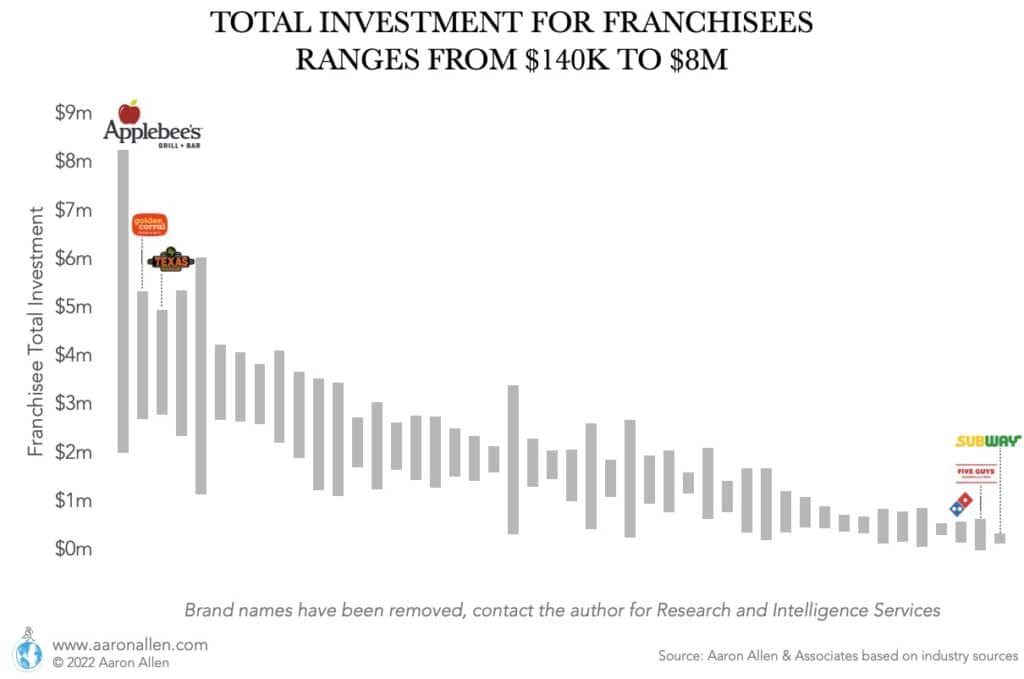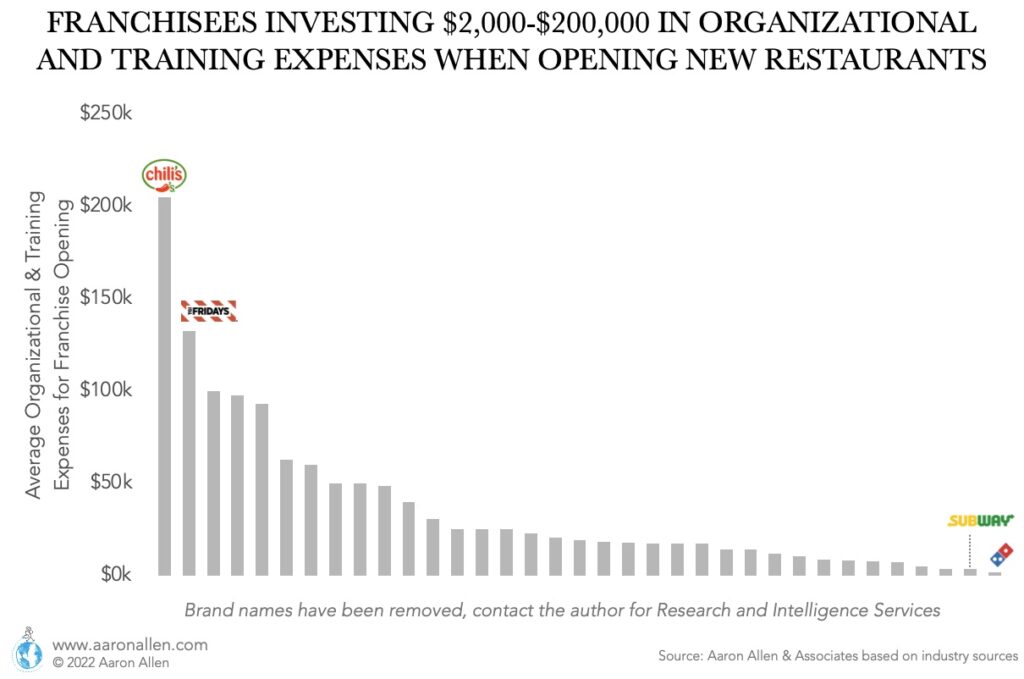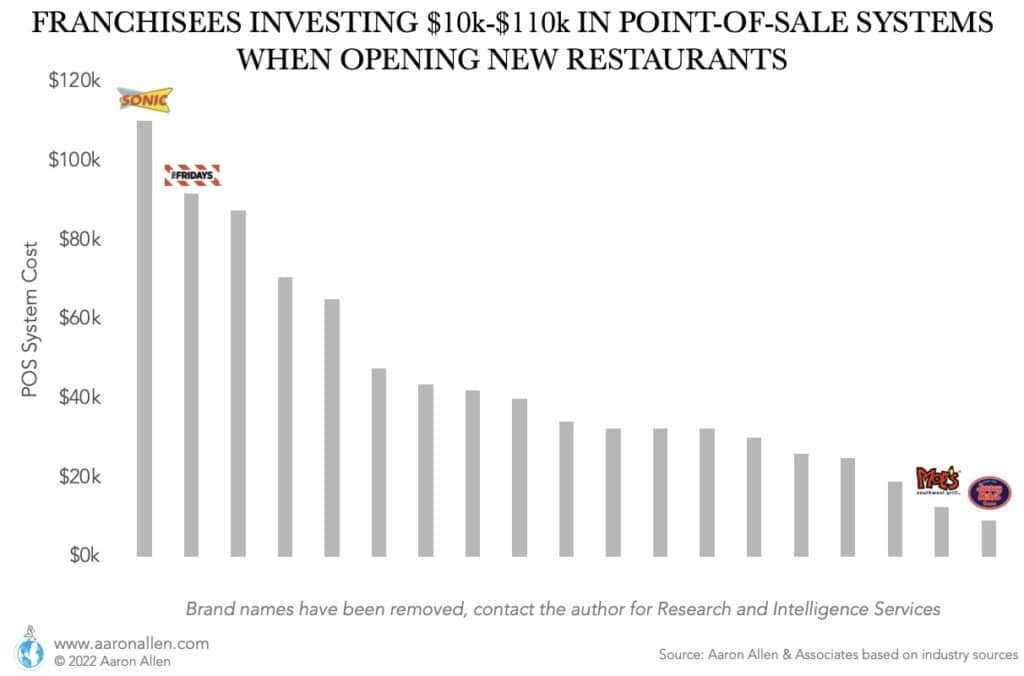Franchising has enabled restaurant chains to grow exponentially across the world. And there is still plenty of room to grow even more. In mature markets like the U.S., chains account for almost 60% of foodservice sales — for every dollar you consume in restaurants, 60 cents go to a franchised system. But in emerging markets such as Latin America, the Middle East, or Asia Pacific, chains represent less than 20% of the market. As these geographies grow and mature the share of chains will increase and restaurant franchise opportunities could move the needle to get a share as high as that of mature markets.
Through time, international chains have expanded to new markets via franchising. Some establish a corporate foothold and franchise the rest of the system, while many directly look for master franchisees that can acquire brand rights to a large territory and that also bring specialization in a geography and can help through brand translation and local nuisance. Franchising also implies a lower investment than opening a large number of new locations, allowing a more capital-light model with better margins.
And there are advantages for franchisees as well. Franchising enables local players to bring on international brands that often have higher sales per unit (compared to local brands), and to import international systems for processes and efficiency without having to make a large initial investment to set them up (and saving in time as well). The payoff time also tends to be faster than starting with a new concept from scratch, and franchisees get support and guidance (on the contrary, if you are operating your own concept and it’s not working, you have no one to call but yourself). For those looking to create a new concept, if doing less than 20 units it’s often better to franchise — think of all the costs involved in creating a new concept, including logos, training manuals and standard operating procedures, design, operational and systems, everything would have to be created from scratch.

Looking for the Best Food Franchise for Your Region?
Food Franchises Require Investments of at Least $140k to Open a New Restaurant
Franchise restaurants estimates for initial investments range anywhere from $140k (minimum amount for Subway) to $8.2m (maximum amount for Applebee’s) in the U.S. And the returns for restaurant franchise opportunities show a similar variability across geographies.
The restaurant chain with the lowest cost to open a franchise has traditionally been Subway with an investment of about $140k. This can be even lower in some countries. Opening a Subway in Chile, for example, can cost between $80k-$120k and it doesn’t require any previous foodservice experience. This was a decisive factor in enabling the company to quickly become the largest restaurant chain by number of units. On the other hand, a low-entry cost attracts investors that are new to the industry (and would open one or two locations) and this makes the system more scattered, difficult to manage, and hard to control quality and consistency (affecting the brand image).

Investors and operators looking for restaurant franchise opportunities in the foodservice industry also have to answer questions like the following when they are considering adding a new brand to their portfolios:
- What is the local market landscape and global trends that can dominate in the mid-term?
- Which segments in the local geography are appealing within the restaurant industry?
- Can the brand (if international) succeed locally, and what are the risks?
- What are the franchise renewal terms? Transfer fees? And Territory protection?
- Are there any incentives or financial requirements to operate the brand or open new stores?
- How often do we have to do renovation or design updates?
- What’s the profitability for this brand and how does it compare to relevant benchmarks?
- What is the support from the franchisor? This is especially relevant in international markets
What Are the Costs for Some of the Most Popular Restaurant Franchises?
- The total investment to open a Buffalo Wild Wings ranges around $3.5 million
- Other casual dining concepts involve similar investments; for example to open a Chilis franchised unit the opening cost is $3.4 million, while a TGI Fridays has an opening cost of $3.2 million
- Wendy’s is among the most expensive fast food restaurant franchises, at an approximate cost of $2.8 million
- A Taco Bell franchise unit implies an investment of an average $2.2 million, which is slightly higher than the cost of opening a Krispy Kreme franchise
- A Chick-fil-A license would cost around $1.5 million, while other chicken concepts like Church’s chicken require an investment of $1.4 million and even less for Wingstop (average franchise investment of $550k)
How to Think of the Investment for the Best Restaurant Franchise Opportunities
The total investment franchisees must make includes things like:
- Building and site work: influenced by the format (in-line, end-cap, freestanding, ghost kitchens, kiosks, and other new alternative formats)
- Restaurant equipment and signs
- Small wares and inventory
- Soft costs like architects and engineers, permits, training, advertising and consulting fees
- Initial franchise/development fee costs an average of $33k and ranges between $5k and $65k
Franchisees will also have ongoing costs that are paid to the franchisor:
- On-going royalty fees (as a percentage of sales) will range in the 4%-8% range. Chains like Subway, with low start-up costs charge an 8% royalty, while larger QSR chains that require a heavier investment charge a 4% royalty (McDonald’s, Arby’s, Wendy’s)
- Franchisees also pay for advertising or marketing (usually a portion allocated to national campaigns, and another portion to local marketing). Domino’s and Papa John’s are on the high-end with 7.5% and 8% advertising fees, while burger chain Five Guys and McDonald’s charge only 2% and 3.2%, respectively
- Some companies benefit franchisees with constant innovation and new tools and will charge a technology fee for that. For example, Domino’s charges a digital fee of $0.295 per digital transaction
Franchise Organizational and Training Expenses Range from Minimal to $200k
Franchisees are investing between $2,000 and $200,000 in organizational and training expenses when opening a new restaurant.
Many dismiss training and are all for training on the job (we see this as putting the burden on other employees) and rarely offering employees the opportunity to brush up on skills, but we think it could have a massive (and positive) impact not just on the company and its employees, but on its customers. Morale is one of the main indirect drivers of sales, in our experience.

Looking to Create a Franchise?
Franchise Building Costs Have a Median of $770k
Franchisees are investing between $200k and $2.6m in buildout costs when opening new restaurants (depending on the need to build from the ground up or if it’s a conversion).
We are seeing many international brands looking to convert footprints to optimize the investment when trying to expand their footprints outside their home markets. Conversions are a great way to obtain top-quartile IRR.

Franchises Will Also Have to Invest in Technology
Franchisees are investing between $10k and $100k in POS systems when opening new restaurants (some, like Sonic, include Digital Menu Housing in the POS tech stack).
When making decisions around technology, restaurant chains have to look at improving efficiency across the system but also taking the opportunity to bake the brand back into the touchpoints that matter most.

The Best Restaurant Franchises Are Global
While the best franchise for you will depend on the geography, time commitment required, level of franchisor support and characteristics as an investor, these are some of the more high-profile global food franchises.
Fast Food Franchises
Fast food or quick-service restaurant franchises include: McDonald’s, Burger King, Popeyes, Sonic Drive-In, KFC, Taco Bell, Subway, Dairy Queen, Captain D’s, Chick-fil-A and many more.
Some notable limited-service franchises from outside the U.S. are Nando’s (only franchises in South Africa and Australia), Harry Ramsden (UK-based), and Wok to Walk (Netherlands-based).
Casual Dining Franchises
There are several casual dining franchises including Denny’s, Chili’s, Applebee’s, Golden Corral, TGI Fridays, and Texas Roadhouse — to name a few.
Some franchisors only franchise in international markets while keeping domestic markets for themselves — this is the case of the Cheesecake Factory, for example.
Coffee Franchises
Some of the most well-known coffee shop franchises are Dunkin’, Costa Coffee (UK-based), Krispy Kreme, and Tim Hortons.
Snack Franchises
Some of the most popular franchises for snacks and ice-cream are Baskin Robbins, Auntie Anne’s, Ben & Jerry’s, Cinnabon, and Cold Stone Creamery.
Pizza Franchises
Domino’s, Pizza Hut, Papa John’s, Dodo Pizza (extended through Eastern Europe), Zizzi (UK-based) and Bella Italia (also UK).
Restaurant franchise profitability will range depending on geography, segment (casual dining compared to QSR), and also if it’s a consolidated system (for example, a large franchise in a region could obtain economies of scale for purchasing compared to a one-store mom and pop franchisee). As a general rule, store-level EBITDA as a percentage of sales (pre SG&A and excluding rent) can range around 16%-22%.
McDonald’s is the largest franchisor, receiving $13b in annual royalties. As of 2021, 93% of McDonald’s restaurants were franchised, and of $23b in total revenues, 56% came from revenues from franchised restaurants as royalties and fees.
The answer depends on a series of factors including intended size and capital available. For many mid-size investors playing in an international arena, it makes sense to import globally recognized brands with proven systems in place rather than to start with proof of concept.
Some of the restaurant franchises with the lowest cost are in the subs, snacks, coffee, and pizza categories.
As of 2022, Chipotle doesn’t franchise restaurants. All Chipotle restaurants are corporate-owned.
Looking for the Best Franchise?
About Aaron Allen & Associates
Aaron Allen & Associates works alongside senior executives of the world’s leading foodservice and hospitality companies to help them solve their most complex challenges and achieve their most ambitious aims, specializing in brand strategy, turnarounds, commercial due diligence and value enhancement for leading hospitality companies and private equity firms.
Our clients span six continents and 100+ countries, collectively posting more than $300b in revenue. Across 2,000+ engagements, we’ve worked in nearly every geography, category, cuisine, segment, operating model, ownership type, and phase of the business life cycle.

